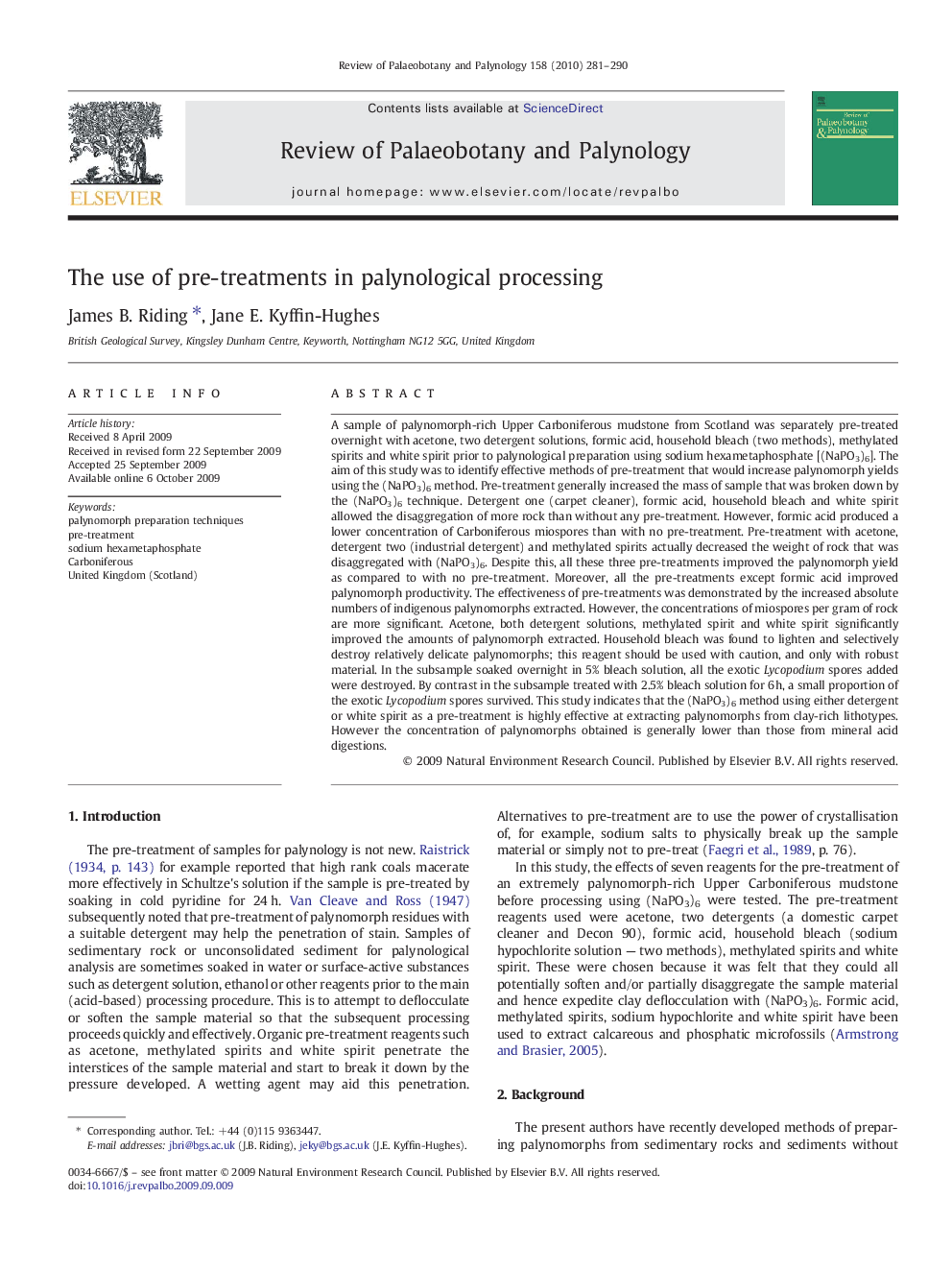| کد مقاله | کد نشریه | سال انتشار | مقاله انگلیسی | نسخه تمام متن |
|---|---|---|---|---|
| 4750909 | 1642550 | 2010 | 10 صفحه PDF | دانلود رایگان |

A sample of palynomorph-rich Upper Carboniferous mudstone from Scotland was separately pre-treated overnight with acetone, two detergent solutions, formic acid, household bleach (two methods), methylated spirits and white spirit prior to palynological preparation using sodium hexametaphosphate [(NaPO3)6]. The aim of this study was to identify effective methods of pre-treatment that would increase palynomorph yields using the (NaPO3)6 method. Pre-treatment generally increased the mass of sample that was broken down by the (NaPO3)6 technique. Detergent one (carpet cleaner), formic acid, household bleach and white spirit allowed the disaggregation of more rock than without any pre-treatment. However, formic acid produced a lower concentration of Carboniferous miospores than with no pre-treatment. Pre-treatment with acetone, detergent two (industrial detergent) and methylated spirits actually decreased the weight of rock that was disaggregated with (NaPO3)6. Despite this, all these three pre-treatments improved the palynomorph yield as compared to with no pre-treatment. Moreover, all the pre-treatments except formic acid improved palynomorph productivity. The effectiveness of pre-treatments was demonstrated by the increased absolute numbers of indigenous palynomorphs extracted. However, the concentrations of miospores per gram of rock are more significant. Acetone, both detergent solutions, methylated spirit and white spirit significantly improved the amounts of palynomorph extracted. Household bleach was found to lighten and selectively destroy relatively delicate palynomorphs; this reagent should be used with caution, and only with robust material. In the subsample soaked overnight in 5% bleach solution, all the exotic Lycopodium spores added were destroyed. By contrast in the subsample treated with 2.5% bleach solution for 6 h, a small proportion of the exotic Lycopodium spores survived. This study indicates that the (NaPO3)6 method using either detergent or white spirit as a pre-treatment is highly effective at extracting palynomorphs from clay-rich lithotypes. However the concentration of palynomorphs obtained is generally lower than those from mineral acid digestions.
Journal: Review of Palaeobotany and Palynology - Volume 158, Issues 3–4, January 2010, Pages 281–290